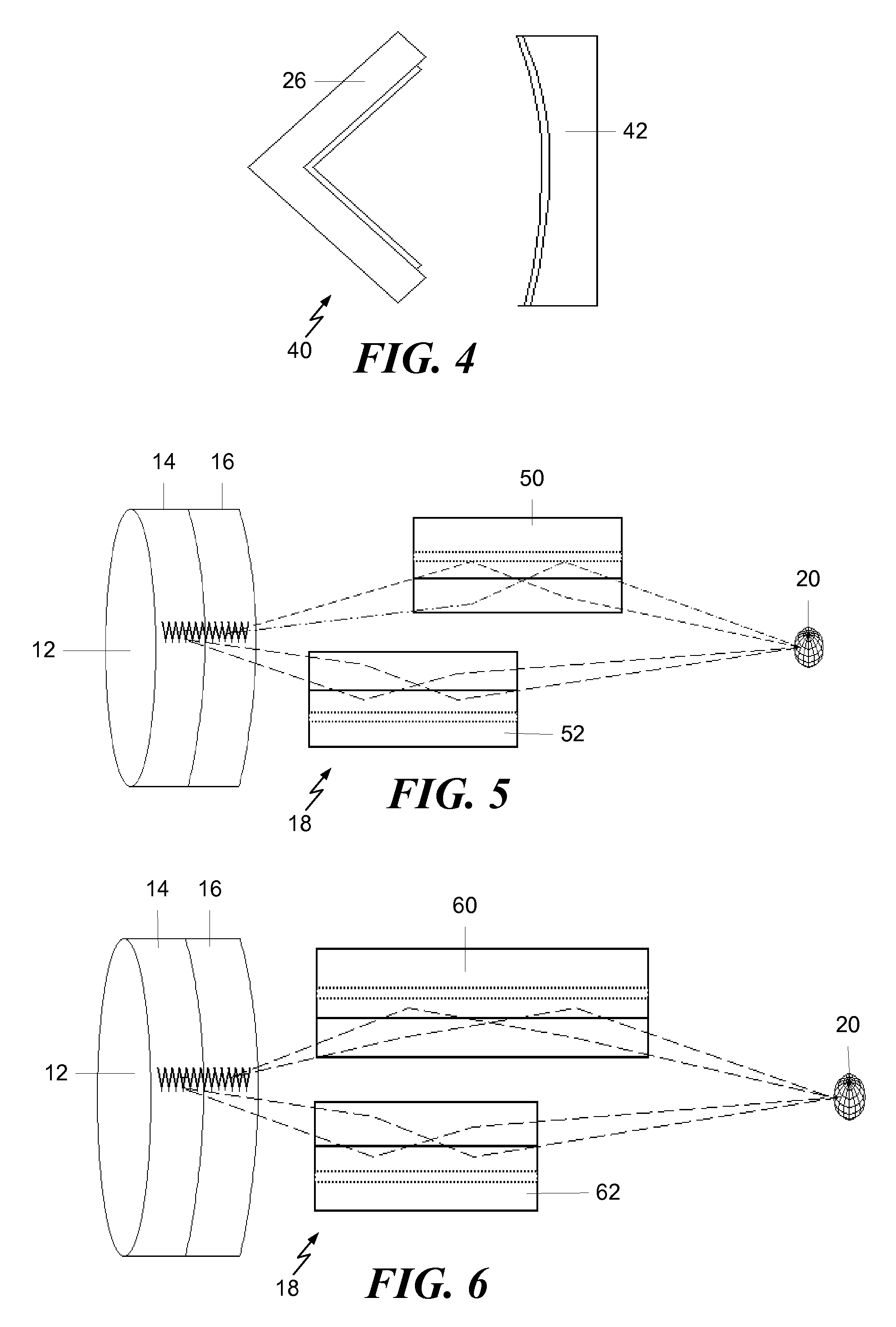Multiple wavelength X-ray source
a x-ray source and multi-wavelength technology, applied in the field of x-ray diffraction analysis, can solve the problems of inability to change the system immediately from operation, time-consuming and laborious changeover procedures, and inability to complete the entire process in one day, so as to achieve the effect of “instantaneous” wavelength chang
- Summary
- Abstract
- Description
- Claims
- Application Information
AI Technical Summary
Benefits of technology
Problems solved by technology
Method used
Image
Examples
Embodiment Construction
[0017] Shown in FIG. 1 is a schematic depiction of a multiple wavelength X-ray source 10 according to the present invention. The source uses a rotating anode 12 that has a target with two different materials. For example, a first section 14 could be made of copper, while a second section 16 could be made of molybdenum. Many other possible material combinations are also possible. The two target materials are chosen such that each provides a different characteristic X-ray wavelength when excited. Both rotate together, and are located relative to focusing optic 18 so that X-ray radiation from the anode may be received by the optic, and focused onto a sample 20 under investigation.
[0018] To provide selective wavelength generation, a two segment cathode 22 is located adjacent to the anode. In FIG. 1, an inset is provided that shows a larger view of the cathode. Three electrical terminals are connected to the cathode are shown and are labeled, respectively, “E”, “F” and “G”. By applying ...
PUM
 Login to View More
Login to View More Abstract
Description
Claims
Application Information
 Login to View More
Login to View More - R&D
- Intellectual Property
- Life Sciences
- Materials
- Tech Scout
- Unparalleled Data Quality
- Higher Quality Content
- 60% Fewer Hallucinations
Browse by: Latest US Patents, China's latest patents, Technical Efficacy Thesaurus, Application Domain, Technology Topic, Popular Technical Reports.
© 2025 PatSnap. All rights reserved.Legal|Privacy policy|Modern Slavery Act Transparency Statement|Sitemap|About US| Contact US: help@patsnap.com



